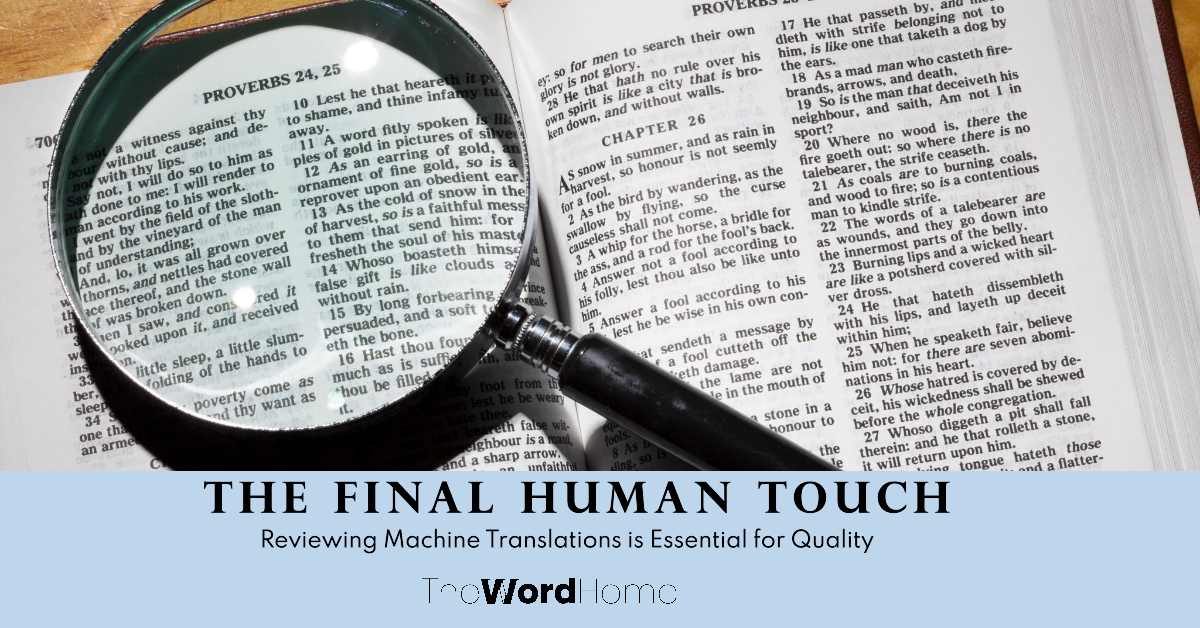Table of Contents
In an era where globalization has made communication across borders easier than ever, machine translation (MT) tools have emerged as vital assets for businesses and individuals alike. While these technologies can swiftly convert text from one language to another, the importance of a thorough review after machine translation cannot be overstated. This article explores why post-translation reviews ensure quality, accuracy, and cultural relevance in translated content.
The Rise of Machine Translation

Machine translation has revolutionized the way we approach language barriers. With advancements in artificial intelligence and natural language processing, tools like Google Translate and DeepL can provide quick and often impressively accurate translations. However, these systems are not infallible. Understanding the limitations of machine translation is the first step toward appreciating the importance of a post-translation review.
Common Pitfalls of Machine Translation
| Context Ignorance | Cultural Nuances | Technical Jargon | Grammatical Errors | Inconsistency |
| MT systems often struggle to understand the context in which a phrase is used. A word may have multiple meanings, and without the nuances of human understanding, the translation can miss the mark. | Language is deeply embedded in culture. Idioms, humor, and regional expressions can be lost or misinterpreted when relying solely on machine translation. | Specialized terminology in fields like medicine, law, or technology may not be accurately translated, leading to potentially costly misunderstandings. | While MT systems have improved significantly, they can still produce awkward or incorrect grammatical constructions that can confuse the reader. | MT tools may use different terms for the same word or phrase throughout a document, resulting in a lack of coherence and consistency. |
Why a Review is Non-Negotiable
Given these pitfalls, it is clear that relying on machine translation without a thorough review is risky. Here is why a post-translation review is essential:

1. Ensuring Accuracy
The primary goal of translation is to convey meaning accurately. A human reviewer can identify and correct errors that MT systems overlook. This is particularly important in professional settings where accuracy can have significant implications, such as legal documents or medical instructions.
2. Enhancing Readability
A human touch can transform a stilted machine-generated translation into a fluent and engaging text. Reviewers can restructure sentences for better flow, ensuring that the translated content reads naturally in the target language.
3. Cultural Sensitivity
Cultural context is paramount in effective communication. A reviewer familiar with the target audience can adapt the translation to reflect cultural norms and sensitivities, making the content more relatable and appropriate.
4. Consistency across Documents
For organizations producing multiple documents, consistency in terminology and tone is crucial. A reviewer can ensure that the same terms are used throughout, maintaining a unified voice across all materials.
5. Quality Assurance
Implementing a review process serves as a quality control measure. By establishing a standard for translated content, organizations can build trust with their audience and avoid potential reputational damage from inaccuracies.
The Review Process: Best Practices
To maximize the effectiveness of the review process, consider these best practices:

1. Select the Right Reviewer
Choose a reviewer who is not only fluent in the target language but also has subject matter expertise. This ensures that they can catch both linguistic errors and contextual inaccuracies.
2. Use a Checklist
Develop a checklist for reviewers to follow. This can include items such as checking for grammatical errors, verifying terminology, ensuring cultural relevance, and maintaining consistency.
3. Encourage Feedback
Create an environment where reviewers feel comfortable providing feedback on the MT tool itself. This can lead to improvements in the technology over time and help tailor it to specific needs.
4. Conduct Comparative Reviews
If possible, have reviewers compare the machine translation against a professional human translation. This can highlight areas where the MT tool falls short and inform future improvements.
5. Invest in Continuous Learning
Language evolves, and so do cultural nuances. Encouraging reviewers to engage in ongoing education about the languages and cultures they work with can enhance the quality of their reviews.
The Synergy of Technology and Human Touch
Machine translation represents a remarkable advancement in linguistic technology, enabling faster communication across languages. However, the importance of a review after machine translation is clear. By combining the speed of MT with the accuracy and cultural insight of human reviewers, we can achieve translations that not only convey meaning but also resonate with the intended audience.
In a world where effective communication can make or break business deals, reputation, and relationships, investing in a robust post-translation review process is not just advisable—it is essential. Embracing this practice not only enhances the quality of translated content but also strengthens the bridge between cultures and languages, ensuring that messages are delivered with clarity and respect.
As we continue to navigate the complexities of global communication, let’s remember that the final touch—a careful review—can make all the difference.


